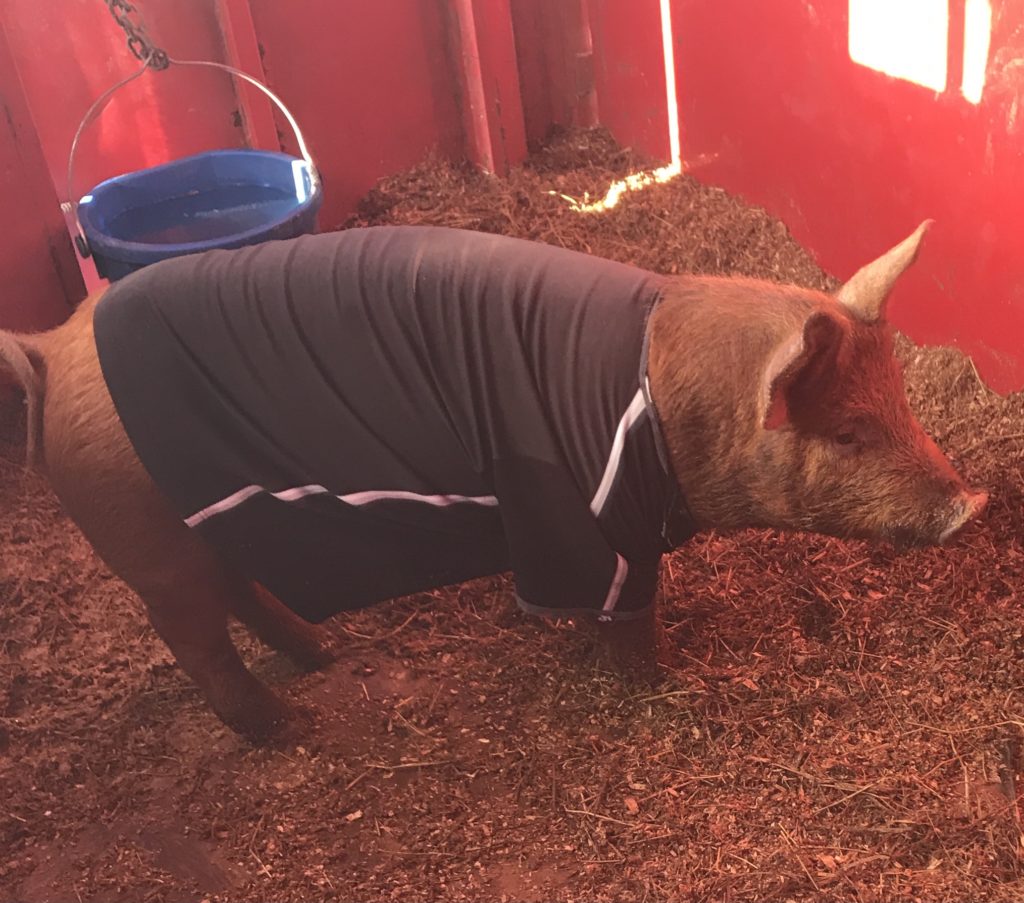By Jacki Perkins
As I am writing this, winter deepens and spring is still a far off dream, and the effects of last summer’s drought will begin to be felt. For anyone buying hay last season, it was a study in budgeting: both for pocketbooks and rations. Short of selling livestock to anyone with enough forage, there are a few strategies one can employ if they find their stockpiles running slightly short.
One of the most obvious, and often practiced, is to supplement with grain. This should always be done with consideration for the animal’s digestive health in mind. A creature that is designed to digest forages will develop ulcers if given a diet too heavy in processed starches. If the decision is made to supplement with grain, consider long stem forages of lower quality to assist with the need for fiber. As always, avoid mold.
Some other feeds, higher in fiber, include beet pulp, bran mash, extruded feeds and cubed hay. All can be purchased at local feed stores, but are costly and usually only fed to smaller animals and pets. Beet pulp is the most fibrous of these options and, in my opinion, should be soaked for several hours prior to feeding. If you choose not to soak it, or are adding it to the rations for a larger group of animals, be sure the animals have access to free-choice (possibly warm) water.
There is the possibility of partnering with local vegetable producers to buy their discarded produce that won’t make it to market. Consideration should be given to species of animal and type of vegetable. For instance, horses should not be fed brassicas or potatoes, but other livestock do well with them. Always take into consideration what an animal can easily bite and chew to avoid choking hazards. Do not feed spoiled vegetables.
Similarly, there is potential to partner with local hemp producers who save their stalks. This fibrous material is known to be relatively high in energy and protein, but it generally needs to be processed into a more manageable size for animal consumption. Hemp silage has been found to be pleasantly palatable by cattle. Hemp stalks have also been used as bedding to add insulation to living environments, and I can see it being very popular with pigs. There are currently few hemp producers in the state, with just one certified processor in Biddeford. Likelihood of certified organic product being available at this early stage of legal production is very low. More information about MOFGA certified operations can be found on MOFGA’s Certification Services website.

Some small managerial strategies can be taken to reduce feed consumption in general. Reducing exposure to the elements will greatly reduce energy needs. Installing windbreaks, using blankets (or old t-shirts) and mitigating muddy conditions can go a long way in helping animals to keep warm without burning excess calories. Fat, dry, fluffy animals that are kept away from drafts are able to stay reasonably warm. Adding a heater to water sources can not only make your day more enjoyable by not having to break ice, but can also encourage livestock to drink more, thus allowing cells to retain heat.
For additional information on hay producers and good storage practices, University of Maine Cooperative Extension has resources available on their website.
